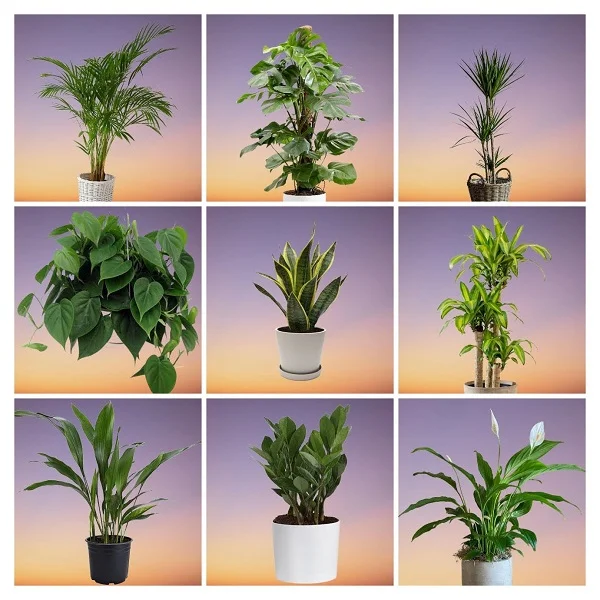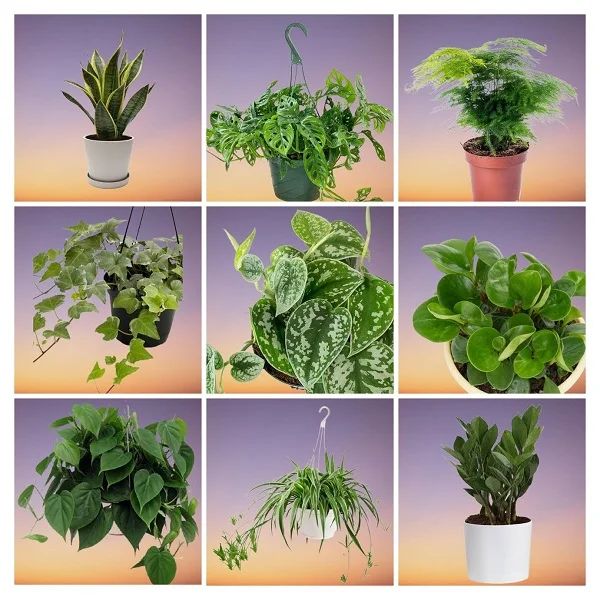Phoenix roebelenii (Pygmy Date Palm) Care Indoors, Propagation, Problems and Remedies
Some links in this post may be affiliate links
Phoenix roebelenii (Pygmy Date Palm) flourishes in bright indirect light, warm and humid conditions and moderately moist, rich, well drained soil coupled with monthly feeding in the growing period.
Pygmy Date Palm is prized for its feathery fronds and tropical aesthetic appeal. This guide will cover everything you need to know about caring for, propagating, and troubleshooting common problems with this palm.
Phoenix roebelenii also called Dwarf Date Palm is among the popular palms on account of its beautiful foliage and tolerance to drought and shade conditions.
The leaves in Pygmy Date Palm are 2-4 feet long, pinnate, with around 100 leaflets arranged in a single plane. The leaflets are about 6-10 inches long and very narrow, slightly drooping and grey-green in color. The fronds develop off a stately central trunk.
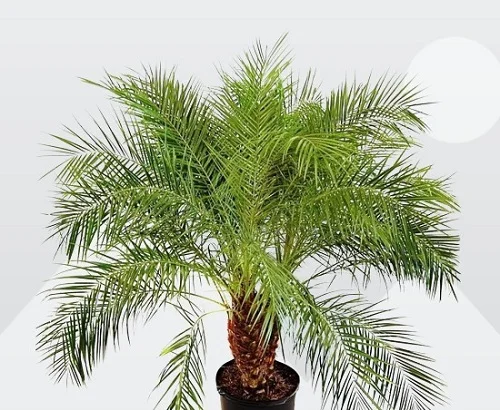
Botanical name: Phoenix roebelenii
Family: Arecaceae
Common names: Pygmy Date Palm, Dwarf Date Palm
Origin
Phoenix roebelenii is native to the dense tropical forests of Africa and Southeastern Asia from Southwestern China, Northern Laos and Northern Vietnam. The Latin name roebelenii honors the orchid collector Carl Roebelen (1855-1927).
How big do Phoenix roebelenii get?
Phoenix roebelenii Palm is a small-sized, slow-growing, slender tree which grows to a height of 3-5 feet and about the same width. These characteristics place this palm among the best plants for limited spaces in the home and office.
Flower
Dwarf Date Palm flowers are small, yellowish, produced on a 18 inches inflorescence. The fruit is an edible 1 cm drupe which resembles a small, thin-fleshed date.
Air Cleaning
According to the NASA Clean Air Study, Phoenix roebelenii was found to be a good indoor air cleaner and gets rid of like xylene, toulene and formaldehyde from indoor air.
Are Phoenix roebelenii poisonous?
The foliage of Phoenix roebelenii is non-toxic to both humans and pets as indicated by ASPCA. The palms are safe for children, cats, dogs, and other pets.
However, it bears sharp spines at the base of the frond which are extremely sharp and toxic. They often snap off once they penetrate the skin and may cause pain and swelling in the affected part of the body. Always wear leather gloves, eye protection and thick clothing when handling this palm.
Related Plants
Pygmy Date Palm (Phoenix roebelenii) is closely related to Phoenix canariensis (Canary Island Date Palm) which grows to a height of 6 feet.
Where to Buy
If you are looking to add Pygmy Date Palms to your collection, you may acquire them online from Etsy (Link to Etsy).
How do you care for Phoenix roebelenii indoors?
To care for Phoenix roebelenii give it bright indirect light (filtered light), average warmth of 16-280C, humidity of 50-60% and moderately moist, fertile, well drained soils coupled with monthly feeding during the growing period.
Pygmy Date Palm care requires repotting every 2-3 years only when it becomes pot-bound. Regular pruning is necessary to keep it neat and tidy as well as minimize pest and disease infestations. Keep reading for more on these conditions and how to provide them..
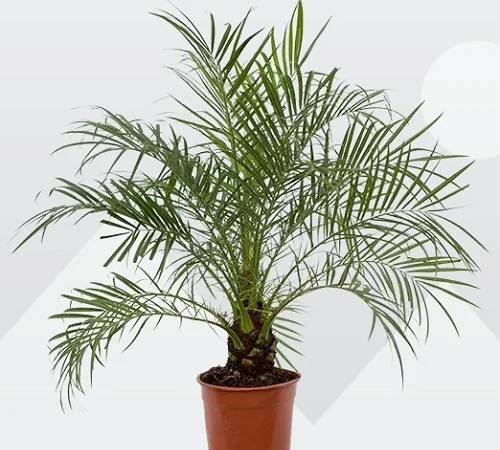
Watering
How often do you water Phoenix roebelenii?
Do not water Phoenix roebelenii on a schedule to avoid either overwatering or underwatering both of which are detrimental to the growth of the plant.
Water your Pygmy Date Palm thoroughly until water runs through the drainage hole and allow the top 2-3 inches of soil to dry out between waterings. Keep the soil moderately moist but not soggy to prevent yellowing of the fronds and root-rot.
Cut down on watering in fall and winter as growth is reduced at this time. Do not allow the soil to dry out completely to avoid brown, crispy leaf tips.
Use chlorine-free water like rain water or filtered water. Like all palms, Dwarf Date Palm, is sensitive to chlorine and other chemicals dissolved in water.
Always empty the saucer of any excess water. Do not allow the palm to sit in soggy soil as it may result in root-rot and death of the palm.
Ensure that the pot has a drainage hole and that the soil is free-draining to prevent it from getting soggy.
Light Requirements
Can Phoenix roebelenii take full sun?
Phoenix roebelenii thrives in bright indirect light. Keep it away from direct sunlight to avoid brown tips and scorching of the fronds.
Pygmy Date Palm can tolerate some light shade but if the light is too little it can cause slow growth and yellowing of fronds. Therefore, consider instaling a grow light to supplement it.
Rotate the pot regularly to ensure that the palm receives light on all sides for balanced growth.
Temperature and Humidity
Phoenix roebelenii requires an average warmth of 16-280C to thrive. If the temperature is comfortable for you it is ideal for the Palm.
Keep it away from cold drafts from windy doors and windows to avoid sudden drops in temperatures as they may cause reduced growth and brown leaf tips.
Pygmy Date Palm does not need a very humid environment to thrive. Moderate humidity of 50-60% is ideal for this palm. However, low humidity may lead to brown leaf tips.
To elevate humidity, set the pot on a wet pebble tray or use a humidifier. Maintain good air flow for the palm to minimize fungal diseases.
Potting Soil
The best soil for Phoenix roebelenii is a well-draining, slightly acidic to neutral soil. A blend of 50% potting soil, 30% sand or perlite (for drainage), and 20% peat moss (for moisture retention) is ideal for this palm.
Fertilizer
What is the best fertilizer for Pygmy Date Palms?
Feed your Pygmy Date Palm with a balanced, liquid fertilizer every 4 weeks in spring and summer. Too much fertilizer may lead to yellowing and leggy growth.
Do not feed in fall and winter as growth is reduced at this time, therefore, the palm does not need a lot of nutrients. Feeding at this time may result in fertilizer burn.
To avoid fertilizer build up, indicated by leaf burn and brown spots, regularly flush the soil. Run a stream of water through the soil until water comes out through the drainage hole. Allow the stream of water to run for some time and repeat the process several times.
Repotting
Repot Pygmy Date Palm every 2-3 years at the beginning of the growing season when the palm has become pot-bound. Use a pot 1-2 sizes larger than the current one. Ensure that the pot has a drainage hole to prevent the soil from getting soggy as it can lead to root-rot. Take a look at these pots with drainage holes on Amazon.
Pruning & Grooming
How to prune Phoenix roebelenii Palm?
Pruning Phoenix roebelenii involves:
- Cutting away the old brown and dry fronds near the soil surface to maintain the plant neat as well as minimize pest and disease infestations. Cut off only old brown and dry fronds. Any frond with green continues to provide food (nutrients) to the palm.
- If the seeds are required for propagation, allow the fruits to mature and drop then cut away the spent flower stalk.
- Where the seeds are not required, cut away the flower stalk immediately to prevent the palm from wasting energy on developing the flowers and seeds.
Clean the leaves regularly with a gentle spray of water from a hose or spray bottle to get rid of dust as well as discourage pest infestations.
Phoenix roebelenii Propagation
Phoenix roebelenii (Pygmy Date Palm) propagation is done exclusively from seeds. Seed germination can take up to 3 months and requires keeping the soil moist through out the period.
How to propagate Pygmy Date Palm from seeds
Seed germination is difficult and may take up to 3-4 months. It also requires that the soil be kept moist through out the period.
- Fill the rooting container with loose, free-draining potting mix and slightly moisten the soil.
- Sow the seeds in the moist soil and cover the seeds slightly with soil. Do not bury them too deep to hasten germination.
- Cover the set up with polythene cover to create a greenhouse effect.
- Place the set up in a well-lit, warm place (300C). Warmth and humidity are important for germination.
- Keep the soil moist through out the period until germination of the seeds has taken place. Germination may take upto 3-4 weeks.
- Lower the temperature slightly after germination.
- Maintain the soil moist until the new palms are well established after which you can begin routine care.
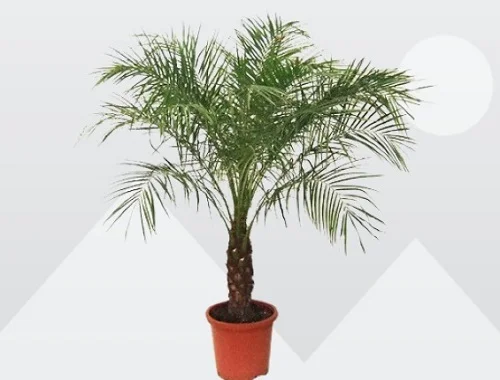
Phoenix roebelenii Problems & Solutions
Pygmy Date Palm (Phoenix roebelenii) problems are brown leaf tips, yellow leaves, brown leaves, drooping leaves, curling leaves, plant dying, diseases, and pests among others. Keep reading for more details on these problems, their remedies and solutions.
Brown leaf tips
Why are the tips of my Pygmy Date Palm turning brown?
The tips of your Pygmy Date Palm are turning brown due to dry air, underwatering, cold drafts, and bruising.
How to fix it
Trim off the brown tips with sharp, sterilized scissors to prevent transmission of diseases.
Dry air: Set the pot on a wet pebble tray or use a humidifier to increase humidity.
Underwatering: Water when the top 2-3 inches of soil dry out. Do not allow the soil to dry out completely.
Cold drafts: Keep the palm away from cold drafts like windy doors, drafty windows, AC units and others to maintain a warmth of 16-280C.
Bruising: Place the palm away from the line of traffic to avoid bruising.
Brown leaves
Why is my Phoenix roebelenii turning brown?
Some of the causes of brown leaves on your Pygmy Date Palm are inconsistent watering, soggy soil, temperature stress, and age (maturity).
How to fix it
Remove the brown leaves by cutting and not pulling to avoid unnecessary injuries.
Inconsistent watering: Do not water on a schedule. Water when the top 2-3 inches dry. Never leave the soil to dry out completely.
Soggy soil: Use free-draining soil and a pot with a drainage hole.
Temperature stress: Keep the palm away from drafts emanating from AC units, drafty windows, heat sources, windy doors and others.
Age (maturity): As the plant matures, the lower leaves turn brown and droop.
Yellowing leaves
Why are the leaves of my Pygmy Date Palm turning yellow?
The main causes of yellow leaves on your Pygmy Date Palm are overwatering, soggy soil, and nutrient deficiency.
How to fix it
Overwatering: Water when the top 2-3 inches of soil to dry out to keep the soil moderately moist.
Soggy soil: Ensure that the pot has a drainage hole and that the soil drains freely.
Nutrient deficiency: Feed the palm with a balanced, liquid fertilizer monthly in spring and summer.
Drooping leaves
Why are the leaves on my Pygmy Date Palm drooping?
Drooping leaves on your Pygmy Date Palm are underwatering, extreme temperatures, and direct sunlight.
How to fix it
Underwatering: Do not allow the soil to dry out completely; water when the top 2-3 inches of soil feel dry.
Extreme temperatures: Avoid exposing the palm to hot or cold air from heating vents, windy doors, AC units, stoves and others.
Direct sunlight: Position the palm away from direct sunlight or use a light curtain to filter the sunshine.
Curling leaves
Why are the leaves curling on my Pygmy Date Palm?
Curling leaves on your Pygmy Date Palm are caused by dry air, temperature stress, and underwatering.
How to fix it
Dry air: Increase humidity; use a wet pebble tray or a humidifier. Group the plants together to create a humid microclimate.
Temperature stress: Place the plant away from both cold and hot drafts like stoves, heat vents, AC units, windy doors and windows among others.
Underwatering: Do not let the soil dry out completely; water when the top 2-3 inches of soil feel dry to the touch.
Plant dying
Why is my Pygmy Date Palm dying?
Your Pygmy Date Palm is dying due to root-rot which is promoted by soggy soil. The disease is characterized by yellowing and wilting of the leaves which is rapidly followed by browning and plant collapse.
How to revive a dying Pygmy Date Palm
- Carefully slip the palm out of its pot and inspect the roots.
- Trim brown-black mushy roots and treat the healthy roots with a copper-based fungicidal solution as indicated on the label.
- Disinfect the pot with the fungicidal solution or use a fresh pot to repot the palm in fresh, well-draining soil.
- Do not water the palm immediately and keep it dry for 5-7 days before you can resume watering.
- Use a pot with a drainage hole and well-draining soil to prevent the soil from becoming soggy.
- Cut down on watering in fall and winter as growth is slowed at this time; keep the soil slightly moist.
Pests
Phoenix roebelenii is prone to mealybugs, spider mites and scales infestations on the weak plants.
How to fix it
- Regularly check underneath the leaves for these pests and take timely control measures.
- Isolate the affected plant to prevent spread to the other plants and treat it with neem oil or insecticidal soap as per the manufacturers' recommendations.
- Regularly clean the leaves by damp-wiping with a soft cloth to keep the pests away.
- Keeping the plant well pruned reduces the hiding and breeding places for these pests.
Conclusion
Pygmy Date Palm (Phoenix roebelenii) is a stunning, easy-care palm that brings a tropical touch to any space. By providing proper light, humidity, and well-draining soil, you can enjoy this beautiful palm for many years.
You liked it? Share on social media.
Related Content
Amazon Associates Disclosure
Homeplantsguide.com is a participant in the Amazon Services LLC Associates Program, an affiliate advertising program designed to provide a means for sites to earn advertising fees by advertising and linking to amazon.com.



